|
The final rites for His Majesty King Bhumibol Adulyadej, Rama IX of Thailand on October 26 exceeded superlatives. This may have been the grandest funeral service in modern history. This essay ruminates on the meaning of the event from the perspective of theological anthropology.
The funeral was a CATHARSIS. There is no doubt that King Bhumibol was loved and revered by the vast majority of Thai people and by uncountable numbers of people of other nationalities. The funeral was meant to include everybody in some way or other. Somewhere between a quarter of a million to a million people got as close as they could to the Sanam Luang in front of the Grand Palace in Bangkok to watch the processions, hear the sounds, and see what they could. Symbolic replicas of that were scattered around 802 sites all over the country, with another hundred shrines in smaller locations. My estimate is that at least 1 in 7 Thai people came to one of these locations where parallel observances were held. People at home were given “ring-side” seats and encouraged to virtually participate. The purpose was emotional release and closure. King Bhumibol the Great was finally and irretrievably gone. The funeral was an ENACTMENT. Embedded in the significance of the King’s majesty is the religious concept of a divine-human encounter. The massive and impressive crematorium structure is a representation of Mount Meru, the axial world mountain in the middle of the mythical Himavanta Forest (“Himmaphan” in the Thai version) that connects the many levels of creation. Humanity resides in the middle level below heaven and above hell, sustained by beings and forces we rarely encounter. We exist outside that forest with its mythical inhabitants and creatures. However, epiphanies do occur whereby people are privileged to benefit from the proximity and grace of certain liminal individuals who transcend the borders between realms of existence. This transcendence is metaphorical until a sacred event eradicates the boundary. Death is potentially such an event. Commentators on live telecasts repeated the belief that the King is returning to “heaven” from whence he came at birth. The royal urn that used to be used literally, but is now the King’s symbolic casket, is, of course, representative of a womb, which is a symbol incorporated in most traditional funeral rites in this part of the world. The vehicle that carried his body symbolically from the palace to the cremation grounds is in the form of a mythic boat and the procession is a re-enactment of the perilous journey across the cosmic sea. In the case of a super-social person (like the King), the nation, the regime, and all who are connected to it are also transformed by association and by virtue of metaphysical reality. Mythic narratives and symbols communicate the paradox that eternity is embodied in this enactment of a grand finale. The consuming cremation fire is actually a liberation from the limitations of mortality. It completes a cyclical round of existence. The funeral was LESSONS. The presence of royalty and potentates from 30 countries, the scale of the cremation site and of the vehicles and structures, and the extension of the events into parallel sessions in every corner of the nation and around the world were meant to teach. One lesson is civic pride. “Thai people are significant.” Another lesson is continuity. This funeral is clad in tradition that goes back to golden roots in Ayuthaya, into India, and on back into the mythic past. These myths were prominent in the night-long performances on the cremation grounds. Continuity was also impressed by the central figure and ritual actions of King Rama IX’s son, the new King Rama X. The third lesson is unity. King Bhumibol was a unifier through his “tireless efforts” (amply mentioned in paintings adorning the funeral structures, in thousands of exhibitions in public places, and hundreds of video clips shown on TV and the internet). Thai people are united because of the King, and it has never been more apparent than at grand ceremonies to mark stages in his life and reign. The fourth lesson is appreciation. People should continue to appreciate this King and all he represents and should keep his legacy and memory “alive in our hearts.” The king was appreciated. Nothing other could have coalesced such a massive, cooperative effort. This appreciation shall be sustained as a chapter in the national narrative. Note: This is the 358th weekly essay on our series. As we begin our sixth year as of November 1, I want to thank Adam Dedman for managing the website these past 5 years. I also appreciate our mostly anonymous readers who average 300 different persons (or about 2000 “clicks”) a week, without whom I would not have had the heart to sustain this writing. During year 6 the focus will be on personal reminiscences, reflections on current events in Thailand and the world, investigations of Thai village culture and religion, and post-postmodernism.
0 Comments
Hell descended on Indonesia in October 1965.
On 17 August 1965, the day I first arrived in Thailand, President Sukarno told Indonesia, in his Independence Day address, that he intended to align Indonesia with the People’s Republic of China. Sukarno’s effort to form a non-aligned bloc of nations with Nasser of the United Arab Republic, was to be abandoned. Sukarno had already withdrawn Indonesia from the United Nations and flouted the USA and its allies while shifting the Indonesian military into hands of Communist leaders. This appeared to be the domino that would fall and fulfill John Foster Dulles’s prediction to the US National Security Council on March 31, 1953, that if one South East Asian nation would fall they would all fall, one by one, like a line of dominoes. President Dwight Eisenhower reiterated the “Domino Theory” in August 1953, suggesting that it would be possible to stop the fall, but if Indonesia fell it would be much harder. Already, the USA was trying to support France to keep this from happening in Vietnam. The “Domino Theory” was behind the US stepping into Vietnam when France lost its colony in 1954. So, August 17 was a critical day in Indonesia. Disaster was soon to descend. On October 1, 1965 Sukarno’s top military leaders were “kidnapped”, according to news reports. In fact, they were found on October 3 to have been killed, and their corpses were buried on October 5 in a public ceremony presided over by Major General Suharto. A bloody story was circulated that the generals had been killed in an abortive Communist coup attempt. Although the coup of October 1 seemed to have failed, the funeral on the 5th consolidated the public and gave focus to massive outrage. Suharto took control. All Communists were to be rounded up. At the time, the Communist parties in Indonesia were the third largest in the world Both military and Muslim civilian groups rounded up countless thousands of “Communists” and possible comrades. On October 18, 2017 the Independent published a report of recently de-classified CIA documents that testify to both CIA support financing and armaments for the anti-communist actions that followed, and also to the extent to which everything escalated out of control. Furthermore, the reports fully implicate Suharto as the one who orchestrated the killing of the generals on October 1 and who fabricated the story of the kidnapping by communists. By December 1965 the USA knew of mass killings and of camps of detainees numbering in tens of thousands, far beyond the capacity of local provincial government groups to sustain. [See the Independent article here: http://www.independent.co.uk/news/world/asia/indonesia-anti-communist-massacres-1960s-us-knew-cia-desclassifed-embassy-files-jakarta-a8006186.html The Indonesian domino did not fall as Eisenhower and Dulles has feared it might. Far worse things happened. We, here in Thailand, were close enough to know something about all this. One of the fortunate first refugees to leave Indonesia was the Rev. Dr. Pouw Boon Kiat and his wife. They initially relocated to Chiang Mai, Thailand where Dr. Pouw was given a position teaching New Testament at the Thailand Theological Seminary. At that time the seminary faculty was the most international it has ever been, before or since, with faculty members from Indonesia, India, Japan, England, Germany, Netherlands, Thailand and the USA. Pouw left Indonesia early because of rising anti-Chinese threats. Behind the anti-communist rhetoric it was essentially racism that energized the reaction in Indonesia in 1965 and 1966 leaving as many as a million dead. This racist retaliation, at the local level, hardly had anything to do with national politics. It had everything to do with fear of the Chinese in dispersion in positions and influence in markets and banks. It had to do with the inability of the nation to integrate and accommodate diversity. The rampage lasted for several months, fueled by tribalism and jealousy. We heard about this sooner than the world at large. There were accounts coming out about camps of 10,000 prisoners, almost all ethnic Chinese or suspicious minorities, who had nothing to eat because their captors had nothing to feed them. They were penned in to starve. One of the sets of anecdotes that emerged later told how some did not starve due to the actions of local people. In particular, Christians, who make up a solid 10% of the Indonesian population, provided food through the fences of the camps. When the situation settled down the camps were abandoned. A couple of years later conservative Muslim groups influenced the government to pass an anti-conversion law that made it illegal for people to change religion. In order to implement this law a census was taken in which people had to declare their religion. An Indonesian informant whose ethnic Chinese parents had survived this bloodbath, told me on October 21, 2017 that communists, rather than expose themselves to arrest by declaring they had “no religion” said that they were Christian. Furthermore, several thousand people who had been sustained by Christians in the bad times declared themselves to be Christian, and to the great surprise of local churches came for baptism. For a while there were mass baptisms of up to 300 at a time. Outside Christian observers called this a “miraculous movement of the Holy Spirit”. Others compared it to the same thing that had happened in Korea when it was the Christians who opposed the early twentieth century “enslavement” of Korea by Japanese nationalists expanding their empire. My interpretation is that when Christians take action to defend and sustain their neighbors there will usually be a “miraculous movement of the Holy Spirit.” Meanwhile, hell was descending on other areas of this part of the world. It came mostly from the US Air Force in the attempt to stop the domino of South Vietnam from falling. Fire fell all over Vietnam, but also on Laos and Cambodia. When South Vietnam fell anyway, there was a tsunami of refugees flooding out of South Vietnam by boat. Those who could not leave were “re-educated” and mostly remained in Vietnam to start over. As this was going on, Communist insurgency groups grew bolder in Malaysia, Thailand and the Philippines. Burma, however, embarked on “a Burmese path to socialism.” Thailand undertook a diplomatic strategy to neutralize what was left of the Maoist threat. Cambodia endured the Khmer Rouge, which was put down by the Vietnamese Army, now rid of America. The Cold War was moving away from the region so not everybody noticed the irony that the Khmer Rouge Communists were subdued by the Vietnamese Communists. Burma settled into civil war and never became anything close to socialist, not to mention Communist. Thailand’s amnesties worked to end insurgency movements in the North and Northeast and along the Malay border, as the Thai fighters grew to realize that Communism would be just another form of repressive regime. Still, I believe that the Domino Theory was devastated in 1965 to those who were paying attention. Apparently, according to what we have just recently learned, the US Central Intelligence Agency was paying attention and did not want the theory to be undone. It was, after all, the rationale for US military presence throughout Asia and the Pacific. The Association of Christian Universities and Colleges in Asia (ACUCA) will hold its annual conference this week. Payap University in Chiang Mai is host. About 100 presidents, rectors and provosts and their representatives are expected from Thailand, Indonesia, Philippines, India, Hong Kong, Taiwan, South Korea and Japan. I am looking forward to meeting a few of the leaders I once served briefly as ACUCA General Secretary. The theme is the intersection of higher education, culture and religion. It is being conducted, coincidentally, in the context of the elaborate last days of preparation for the cremation of His Majesty King Bhumibol Adulyadej of Thailand, which is the most extravagant Thai cultural event of this century (so far).
I expect the ACUCA conference to stay safely away from consideration of cultural challenges to freedom of expression, cultural experimentation by marginal ethnicities, and academic defiance. We do not anticipate the secret police to send observers to record our speakers, as they did at a conference a few weeks ago conducted at a university on the other side of the city. We would be shocked if any of our speakers were arrested, as was an eminent scholar earlier this week for remarks he made in a conference 2 years ago that invited academics to be willing to investigate and question the veracity of a legend from 500 years ago about a battle between two kings on elephants. I do not find any mention in the conference program of how wary Christians must be in Indonesia where any hint of criticism of the dominant culture can be interpreted as a blasphemous insult to Islam. Even in South Korea certain topics are taboo. Harassment by cultural “police” is not out of the question even for a polite academic conference like the one we are planning. One of the keynote presentations is about how the Christian Communications Institute (CCI) of Payap University adapts Thai folk drama to convey Christian moral messages. CCI’s innovation being show-cased at the conference is how ลิเก (Thai folk melodrama) has been used for 30 years to re-narrate the story of the Prodigal Son. CCI has presented this model at international conferences, world evangelistic assemblies, and on tours throughout Asia, Europe, North America and Australia. Uniform applause has not always been the response, however. After the first trip to the USA in the early 1980s, an incensed Thai observer in the USA wrote to the Thai Royal Palace that this Christian group was distorting and misrepresenting beloved Thai cultural heritage. Because the charge had been sent to the Palace, it had to be investigated. Dr. Amnuay Tapingkae, president of Payap University, and members of the CCI staff hurried to Bangkok where a Princess, known for her love of traditional culture, presided at a meeting and declared that folk drama was an art that traditionally incorporated local and contemporary references, and the forms used by the CCI were neither insulting nor distorted. One never knows when culture and religion will erupt into controversy and confrontation. In best cases, those eruptions can be converted into occasions for dialogue. That is what higher education is supposed to do well. But in times of conflict and threat, people may clamor for protection. These days, students may be intolerant of challenges and try to demand that their universities surround them with safety. The boundary between intellectual stimulation and intimidation may seem to disappear. When higher education is hijacked for use as a cultural tool, it ceases to be, in any sense, “higher”. It has lost its purpose and no longer performs its basic service of holding culture accountable to core values and principles. “Culture” may be abstract, but its advocates have faces and names, and often have offices, ministries, functionaries, lawyers and connections with enforcement power. These people can be held accountable. The topic of the ACUCA conference this coming weekend is not as far from the current battlefronts as the conference brochure may imply. If there is to be a third world war, it will begin by building walls between cultures and daring anyone to assault the walls. Cultural protectionism begins by ramping up fear and hate. University administrators may not want political issues to intrude on the smooth production of effective members of the labor pool, but if higher education refuses to hold culture accountable, who will? Spectacular events are something that every religion tries to have from time to time. Pramote and I got up early on Friday to participate in one near our home. The early hour was one reason for asking, “Why are we doing this?”
Several villages combined efforts to hold a merit-making event to mark the end of the Buddhist rainy season retreat. Buddhist Lent ended on the day of the full moon this week. During the retreat people made a special effort to observe the Buddhist precepts, and some spent a day and night or two each week at the temple learning chants, listening to sermons and instruction, and practicing somewhat austere disciplines. Monks are required to stay in their monasteries unless they get permission to leave for some particular purpose. Life centers on the temple-monastery. The traditional reason is that the Lord Buddha had compassion on village folks who had planted rice at the beginning of the rainy season, and so he instructed his disciples to refrain from traipsing around over the rice fields trampling on the seedlings. But when the rainy season ends, the monks can be out and about again. This is the occasion for another kind of merit-making. Once again the monks will be making the rounds collecting food. The reason for monks doing this is to make it easier for the laity to earn merit by donating food without having to travel to the temples. The picture of monks getting rice ladled into a pot held in a sling carried on the monk’s shoulder is an icon of Buddhism and a summary of many aspects of faith. People kneel (if they are able) to receive a blessing after making their donation. Kneeling is a sign of reverence to what the monk stands for. The monk is the most immediate link between one’s daily existence and the sacred goal of enlightenment and release into an ego-less state free of suffering, toward which one is (hopefully) moving. Monks facilitate the person’s devotion to the Lord Buddha by enabling this pious act. One of the final exchanges in any morning service is for the laity to ask the monks for permission to present them a meal. Unlike many chants that precede it, this chant is in vernacular Thai. But the simplest form of this offering is at one’s front gate or on a city walkway. There are several more spectacular ways of doing this. Our event at Wat Doi Saphan-u on Friday morning was designed to give people a chance to multiply merit by placing offerings in the pots (i.e. in the bahtr ) of 99 monks. This mass offering was called Tham Bun Tak Bahtr Tee Wo Rohana (ทำบุญตักบาทรเทโวโรหฌะ). According to the math by which merit is calculated, the amount of merit increases in proportion to the effort needed to do the act. 99 is a very auspicious number, and the intention to do something 99 times is approximately 99 times better than doing it once. It did not decrease the merit when only 89 monks actually came. The effort had already been made to provide offerings for 99 monks. Intention counts. The offerings were food items placed in the monks’ bowls, but we had been instructed to bring “dry” food which would last and which could be distributed or converted into cash. Each monk collected a large sack-full of items such as packs of noodles, packets of rice, boxes of milk, bottles of water and the occasional bunch of bananas. The monks made merit by relinquishing this abundance for the use of the poor and disadvantaged, or for the greater good of the community at large. Everybody made merit, even, presumably, photographers. The setting was impressive, at the foot of the hundred steps leading up to colossal images of the Lord Buddha facing in the 4 cardinal directions. That setting might have played a small role in attracting a crowd for this annual event. But the event was all about making merit. Without merit-making it is hard to imagine what would hold northern Thai Buddhism together and enable a hand-full of little villages to produce such a spectacle. Note: This is the second essay in a series that will extend through 2018 on “Temple Secrets” about little known aspects or events in Northern Thai village temples. The introductory essay is “Alive”. www.kendobson.asia/blog/alive The next essay in this series will be in November. Benjamin Zawacki explains in Foreign Policy, September 29 2017, that Thai Prime Minister Prayuth’s trip to Washington and to the White House on October 3 is just a side show. China has taken the center ring:
“Prayuth’s decree [to proceed] on the high-speed rail [plan proposed by China] not only set a precedent but revealed more subtle Chinese influence. The “China model” of authoritarian capitalism has all but replaced democracy in Thailand, as well as eroded “U.S. values” of human rights and the rule of law. A prohibition on political gatherings remains in place nearly 41 months after the coup, and elections are routinely dismissed as untimely. Military justice has expanded, and a close watch is kept over the press. Yet few Thais seem to notice or care, as the Chinese ideal of government has been embraced across all parties, factions, and political interest groups for more than a decade.” I think Zawacki’s memory is too short. It all ended with Vietnam. As soon as the US abandoned Saigon in April 1975, Thai Prime Minister Kukrit Pramoj lost no time getting up to Beijing (July 1, 1975). It was not yet clear that “Red China” no longer had designs on Thailand as a Chinese colony, but the short-lived mostly-democratic government of PM Kukrit saw that the USA was not to be counted on in the near future to fight another war in mainland South East Asia. Thailand, in other words, was on its own with only ASEAN to back it up, for what that was worth without US ships, planes and weapons. US military support for Thailand did not end immediately, although the emphasis in Thailand dramatically shifted from military to domestic issues between 1975 and 1990. During that time (I think, not coincidentally) many ethnic Chinese-Thai families changed to Thai language surnames and Chinese-Thai elite were incorporated into the inner circle of leadership of the country. They played an important part in helping Thailand grew to become one of the “Asian economic tigers” with annual double digit expansion of its gross national product and interest rates, and an astounding shift from agriculture to industry along with an equally amazing expansion of the middle class. For a while trade between Thailand and the USA continued to be dominant, although many were perplexed when strong US brands disappeared from the marketplace, including all US types of automobiles. The rise of Japanese trade that replaced US products essentially screened the rise of Chinese commerce, soon to be followed by Chinese banking built on the need to secure financing for gigantic Chinese projects such as large military hardware (submarines), transportation hardware (high speed railroads) and infrastructure (trans-Asian highways). It would be ludicrous to suggest (as I have seen commentators write) that Thailand is unaware of what it is doing when it accepts Chinese “help” and loans to build these vast structures, perhaps including a canal across the isthmus and much else. As Zawacki observes, it is a convenient bonus for the military coup leaders that the gradual shift from a close US-Thai alliance to a Thai-Chinese partnership removes the most pressing need for Thailand to defend its political and human rights policies as somehow in line with “US values.” It must be a relief for the present Thai government to be able to talk to Chinese counterparts without having to drape the conversations with these issues. However, Zawacki is again short-sighted to infer that it is possible that “few Thais seem to notice or care, as the Chinese ideal of government has been embraced across all parties, factions, and political interest groups….” What he calls the “Chinese ideal” has been the Thai norm for decades, and probably for centuries. But, it has NOT been embraced across ALL political interest groups. A salient characteristic of the Chinese ideal, however, is to suppress dissent so it doesn’t show. What will become obvious to careful Thai observers and analysts when PM Prayuth visits with President Trump on October 3 is that now the USA has not only lost military influence and economic clout, but the current US administration has no moral authority, either. In fact, the only reason to stop at the White House at all is to see what can be traded for some show of a Thai middle finger in the air toward North Korea. |
AuthorRev. Dr. Kenneth Dobson posts his weekly reflections on this blog. Archives
March 2024
Categories |
| Ken Dobson's Queer Ruminations from Thailand |
|




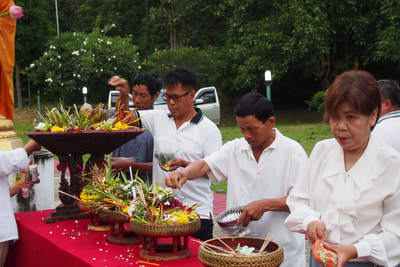


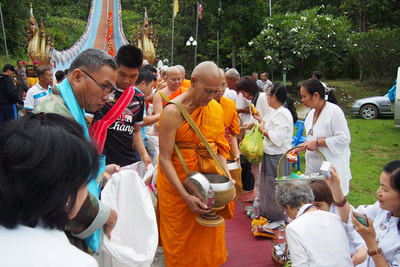
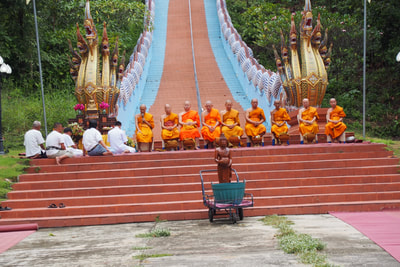
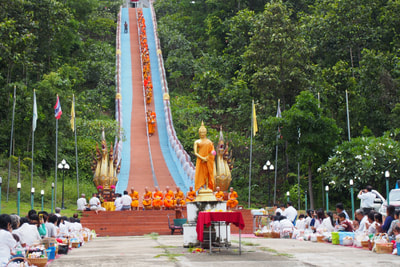






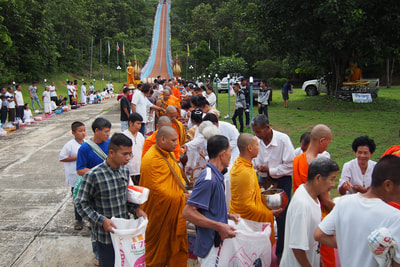



 RSS Feed
RSS Feed
